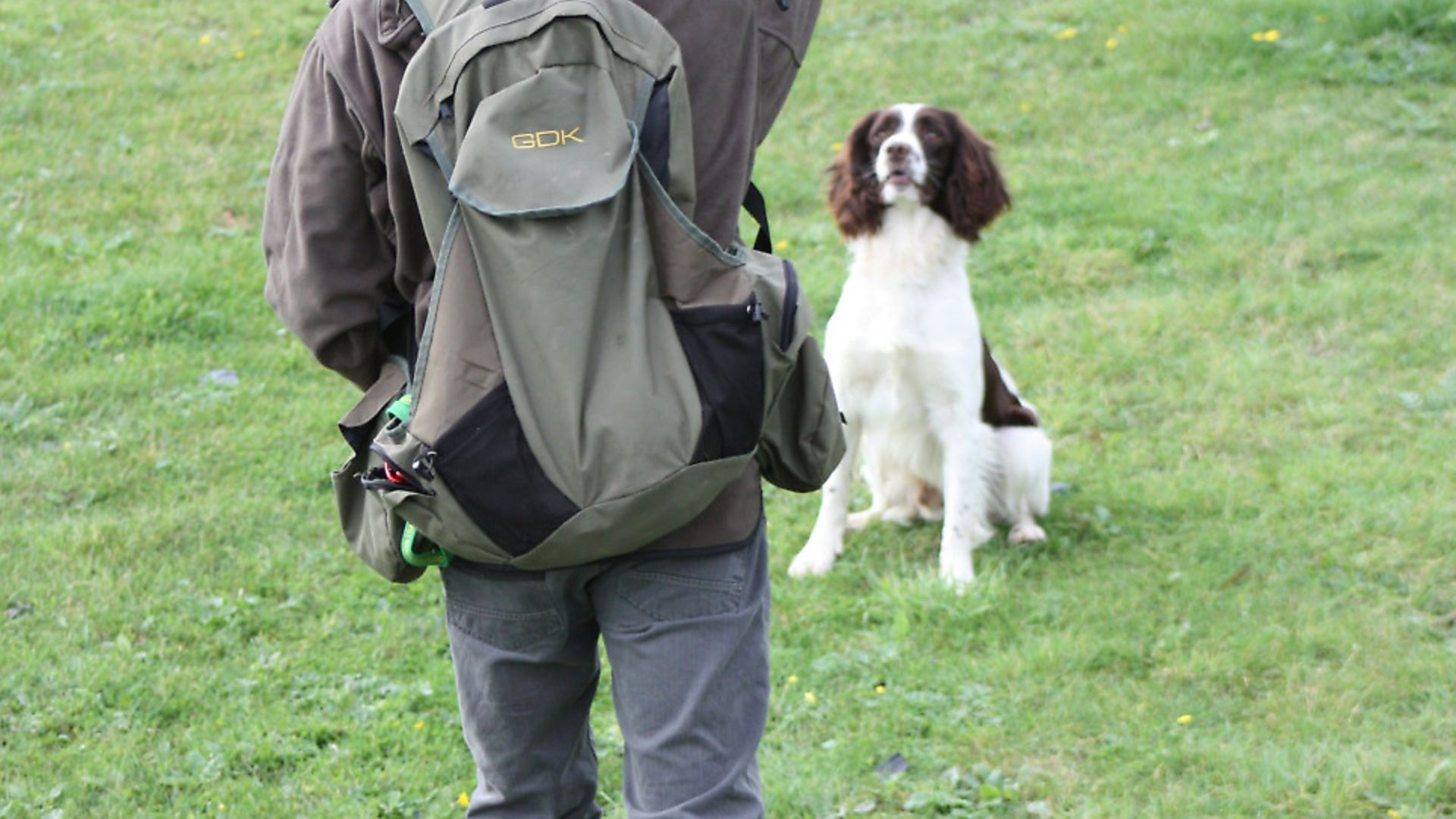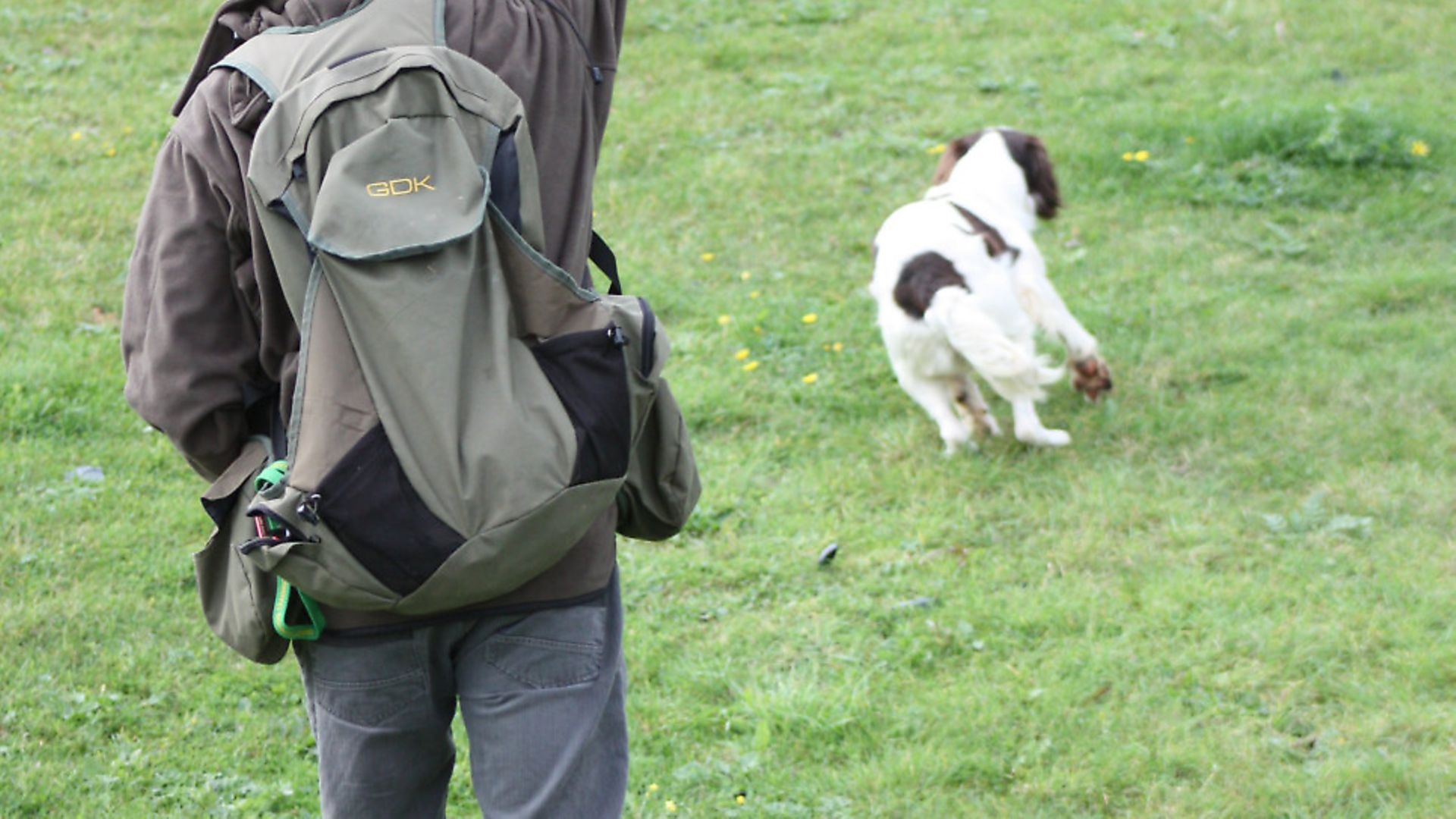Howard Kirby explains how to train your gundog to master the memory retrieve and the blind retrieve - two skills that will be invaluable in the field
 credit: Archant
credit: Archant
Our dogs are remarkable creatures: masters of strategy, athletic and willing to conform to the pack – which is why it’s important that we are the best we can be when we choose to make them part of our families! Trying to understand and figure out how dogs think, learn and develop is absolutely fascinating – and something we can only learn through experience.
In previous articles, we’ve examined how we can help young and inexperienced dogs to gain the knowledge they need. Setting up exercises that allow them to learn how to judge distance is one important aspect of this – a skill that falls under the dog’s ability to ‘mark’ the fall of game.
My favourite technique for this is the memory retrieve. Relatively easy and straightforward to use, the only downside to this is that you have to do a fair bit of walking. First, let’s make sure we thoroughly understand how it works... and while we’re at it, I think it’s important to make this point. I was chatting to a keeper/professional dog trainer friend of mine a couple of nights ago. We regularly chat about all things dog and country and he very kindly reads my articles and gives me feedback. He’s a harsh critic, but I think it’s good to have someone that tells you how it is. I regularly go and run my dogs on his ground; he’s an excellent shot and dog man and I can pick his brains and he’ll tell me what he thinks about the dogs I’m running. All of this helps me to keep my pencil sharp! Anyway, I was telling him how difficult it is to pitch an article at an audience that might range from a complete beginner to highly experienced handlers. So that’s why I regularly refer to what some might think are obvious snippets of information. Just saying!
So let’s get back to the memory retrieve and what it brings to the party. The memory retrieve allows us to ensure that the dog knows exactly where the dummy is. Armed with this knowledge, and when told to fetch, the dog should be able to launch itself into the retrieve with power, pace and confidence. Importantly, also in the right direction. There are plenty of dogs and people who have plenty of power, pace and confidence, but when let loose go racing off in the wrong direction. If set correctly, we can build the dog’s ability to use its memory, which in turn allows a trainer to develop retrieves at ever-increasing distances.
 credit: Archant
credit: Archant
The memory retrieve exercise
Walk your dog at heel or hunt it out to the area that you have chosen to leave the dummy in. Depending on your dog’s experience, this may be on a short grass lawn or in cover. Ensure the dog sees where you have thrown the dummy.
Now turn and walk the dog away. This is the point where the exercise can have a huge variation in the degree of difficulty you set for the dog. With a real beginner, you might only walk 10m before turning and sending the dog. With a more experienced or advanced dog, you can hunt away and have several ‘finds’ or ‘flushes’ before sending for the retrieve (see diagram).
Building the degree of difficulty will be a progressive thing. Ensure you engineer straight lines. Most dogs will return to the dummy via the route you took as you walked or hunted away, so avoid going around corners. Straight lines!
Hedges, ditches, fences, walls and rivers are all obstacles that need to be crossed. When faced with these, most dogs will initially view them as barriers, irrespective of how straightforward they appear to us. They will tend to get stuck and run up and down them until given the opportunity to jump, climb or swim. Your young dog will need to have been taught these skills if he is to be able to overcome them.
Hedge lines throw a multitude of problems at dogs when a dummy is thrown or a bird shot on the opposite side. When presented with a retrieve that is any distance out from the opposite side of a hedge line, an inexperienced dog will often opt to hunt up and down the hedge. You should expect him to not be able to figure out that it will be necessary to push on out into the field. You will need to practise this exercise.
Memory... mark... blind
The three-retrieve memory, mark, blind is a good formula to use here. By starting with a memory retrieve, the dog will have been shown the direct route to the dummy, which, as discussed earlier, will lead to first time success.
The second marked retrieve is then thrown to the exact same spot, leading to the dog having the confidence to make a third retrieve without seeing a dummy being thrown -–this would usually be termed as being a ‘memory blind’. This training technique is enhanced by having someone throw and place dummies for you.
The next stage in building a first-class retrieving dog is that you will need to be able to handle the dog. This means he will need a clear understanding of a verbal and visual Over or Back command. Once you have taught the dog to go through a hedge and on out into the field, you can sit him on one side of the hedge, give him the mark, leave the dog on the sit and walk away from him. Ensure you have constructed a straight line between the dummy, dog and yourself.
Now raise your hand high above your head, palm facing towards the dog and send him on the Back command.
Stopping the dog
In any gundog work, we are going to need a really reliable Stop whistle. It’s one thing to stop your dog in your back garden and something very different when the dog is ‘fired up’ and working hard. Unless your dog has a thorough understanding that they must stop instantly when you blow the whistle, everything else will be difficult. A dog that stops most of the time or in his own time has a very different mindset to one that is ‘on the whistle’. The former is much less likely to be wanting to take direction from you.
The perfect Stop whistle comes from a trainer who has successfully taught the dog to understand that the whistle brings him huge rewards.
In the field
In a real shooting scenario, we can imagine that you have been given a blind retrieve that is 30m out from a hedgerow in a neighbouring field.
With a trained dog, we can line the dog and send him towards the hedge. Let’s assume the dog is being sent into a head wind so that if conditions are right the dog will ‘wind’ the bird and be drawn through the hedge and out across the field to the dummy. Job done!
Of course, it won’t always be that straightforward. If we have schooled the dog to take a verbal Back or Over command, the dog will respond and push through the hedge. Once again, you may need to push him with your voice to get him out across the field to the fall – this is a bit more complicated but once again, it’s a job that has ended with success! Upon arrival at the hedge, your dog may well decide that it’s going to work the hedge. A quick decision is required here. Blow your Stop whistle; now you have the dog’s attention. The visual Back signal (hand vertically above your head) instructs the dog to fly back through the hedge and across the ground to the bird.
Sounds wonderful doesn’t it? You’re right, it is! But these three different scenarios require a dog that has been carefully schooled through a series of exercises, bringing its level of training to this point. This is months of fun and games. So what are you waiting for?
Keeeeeep training!